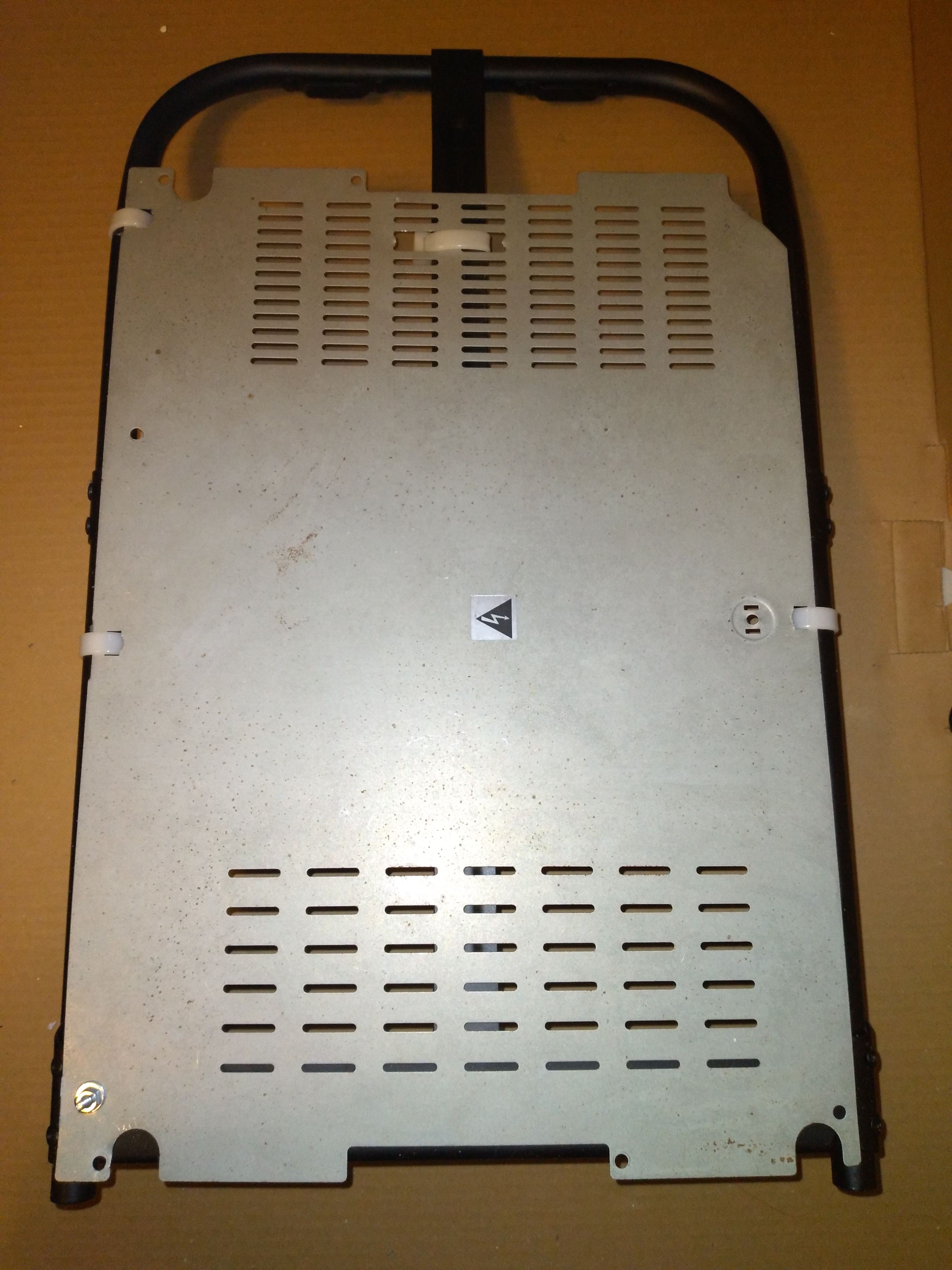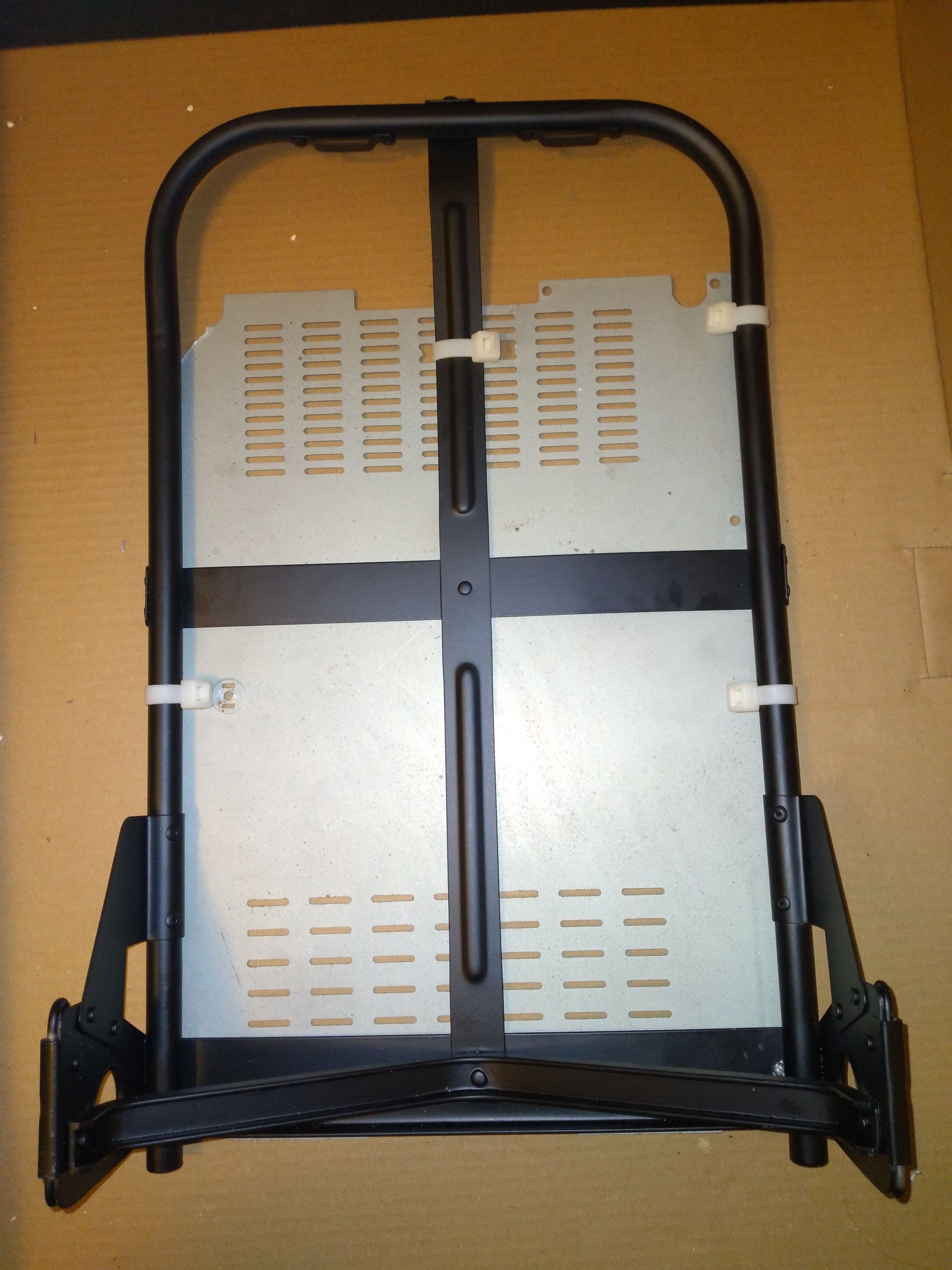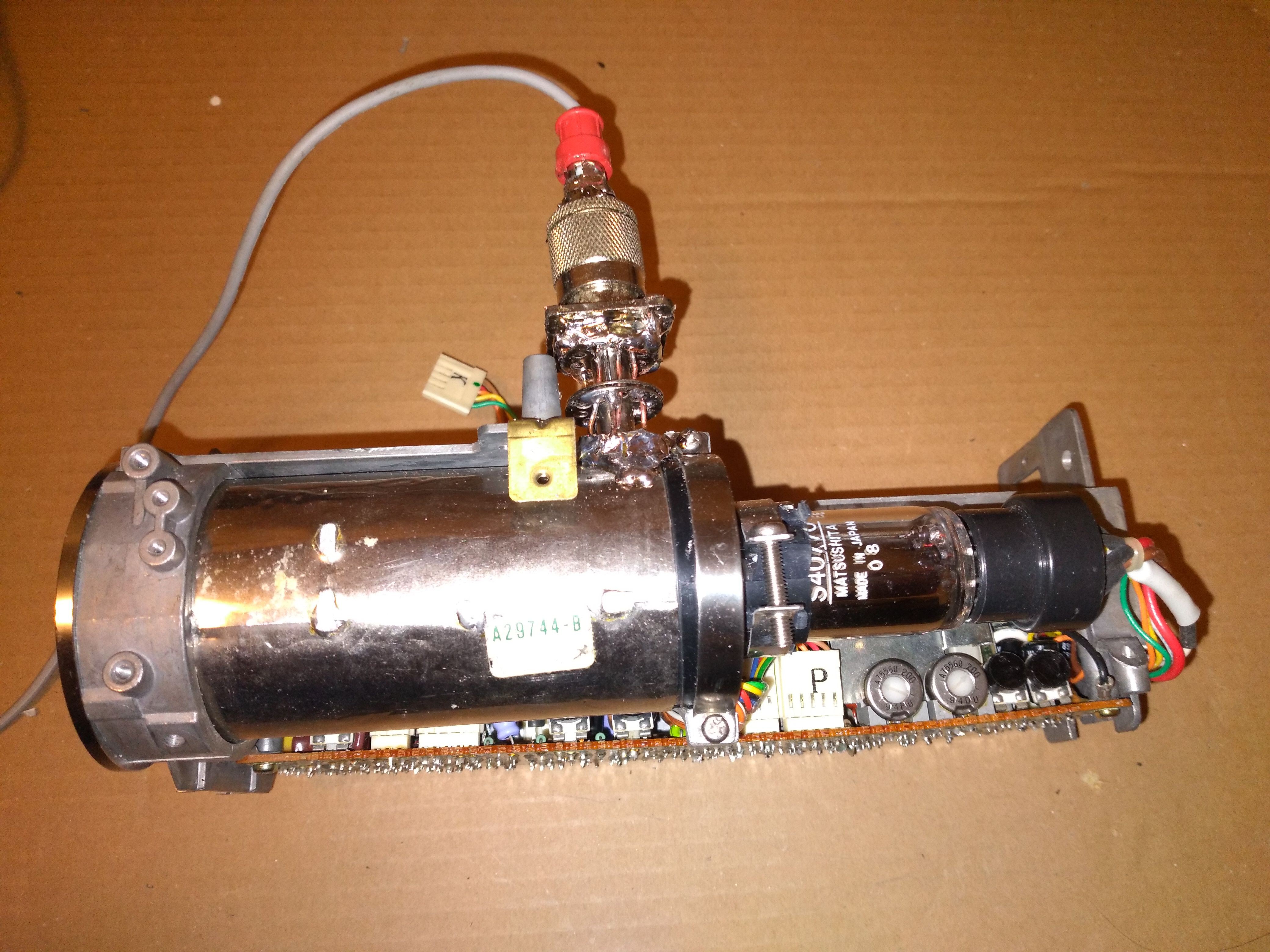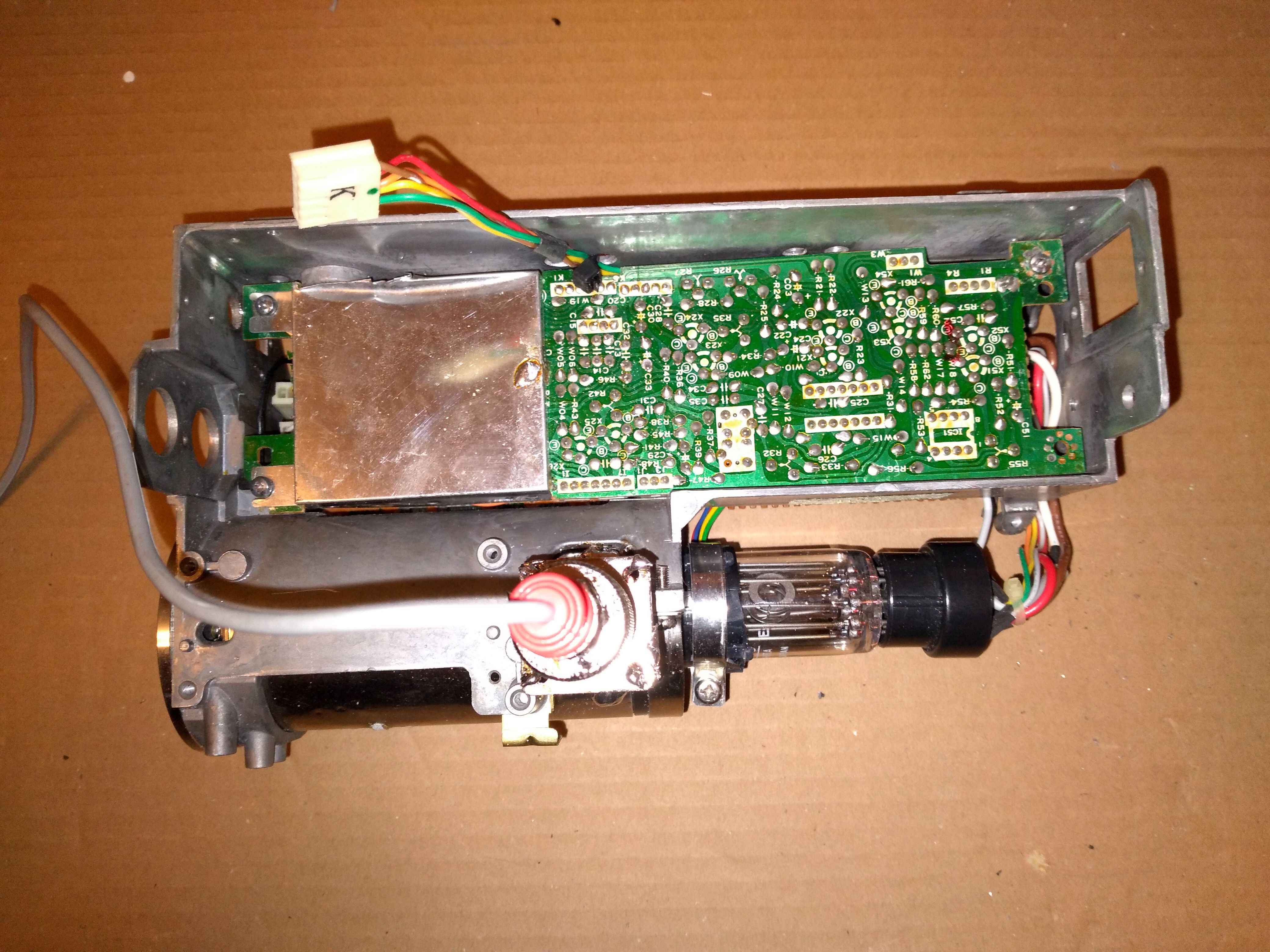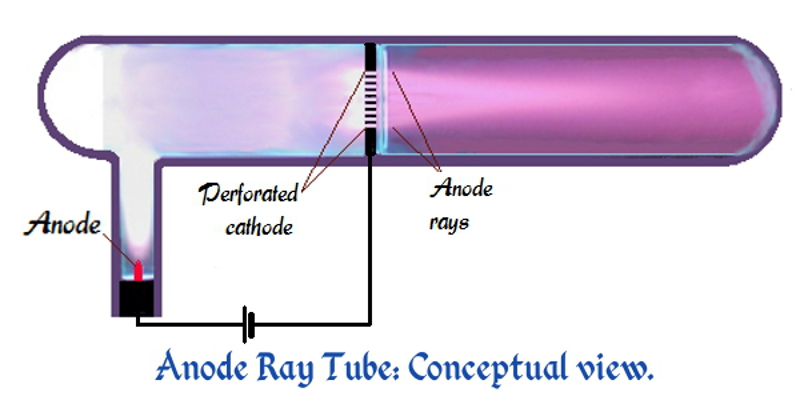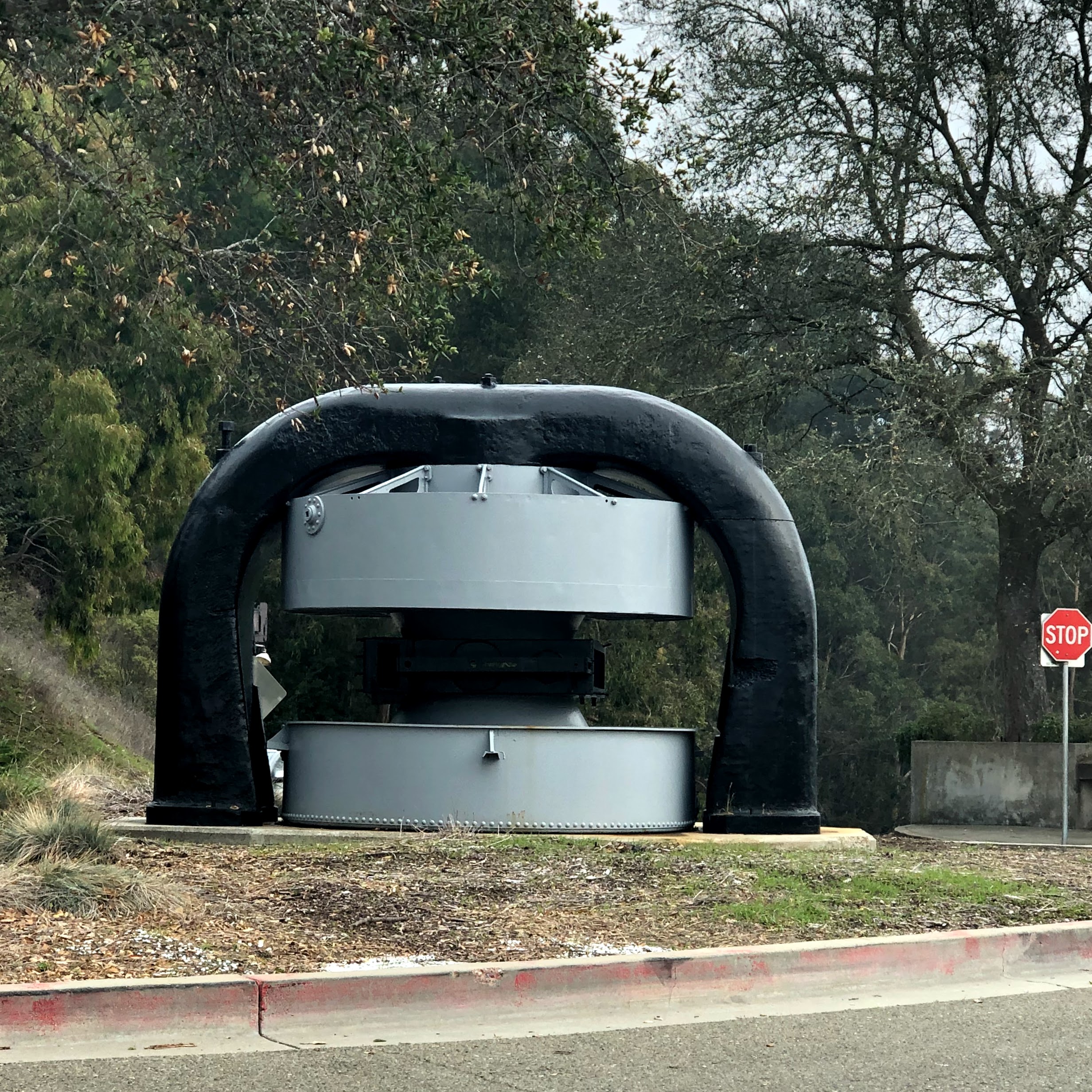-
"Ordinary household toaster." "We'll take your word for it..." -- Readying the frame and making the prop 'anode ray tube'
02/17/2022 at 22:31 • 0 commentsWell, now that I'm not sick any more -- dunno what I had, but it sucked; lots of fatigue and a fever were the only notable symptoms, though -- I figured I might as well do the writeup for the stuff I did like a week ago lol. This was actually done the night that I put up this project and the other logs, I've just been kinda out-of-commission or doing other stuff since. (It's not like I've not had other stuff to do!)
Anyways.
I'd actually bought an (overpriced as heck IMO but I guess I don't know prices these days) ALICE pack frame from Amazon. For those who don't know -- which will be most Americans who aren't in or anywhere near the military, and most international civilians unless they were invaded by us before the Twin Towers fell. (Since then we've largely been using ALICE's successor, MOLLE.)
The ALICE pack system -- it's not just a frame -- was created in the late 1960s and early 1970s for US Army grunts serving in Vietnam. It's a whole modular backpack system that's about as comprehensive as you'd expect, if you know your military stuff (and if you don't... there's something for everything), and it's simple and rugged, as military stuff tends to be, because it has to be. I'll refer you to Wikipedia for the historical background; as I understand it, US Army field manuals on stuff like this are, for the most part, public record -- especially for things like the ALICE system that aren't in significant use any more (Wikipedia notes that a few US Navy and USAF ground units, as well as the US Army National Guard, still sometimes use the ALICE system, but mostly for training purposes, and only very, very rarely for actual in-action on-duty purposes if at all) -- some of those manuals can be a bit hard to get ahold of online, but some are just... out there in PDF. I can't speak to which it is for the ALICE system in general, but you usually don't need a field manual for a backpack anyways.
Mine is a modern knockoff, all the actual mil-spec ones are long out of production and very, very used. I'm fine with that, as I'm not planning on getting shot. This isn't a GI Joe cosplay, after all (heh...)! It's simple, cheap tube steel and sheet metal in black enamel. The olive green strapping is visibly cheap and the padding doesn't inspire confidence, even just looking at it.
Ehhh, it'll do. Again, this is cosplay-grade. I'm not expecting this to perform like the real thing in the rough, and I'm not expecting to put it through those paces.
I had a bit of sheet metal from an ancient system that didn't make it. I think it was from the first-gen Compaq Deskpro someone gave me years ago that had a bad power supply. Never figured it out, but the system wouldn't run and the supply smelled like electrical Bad Things Are Happening when you turned it on... despite a complete lack of visible symptoms of any kind. I think this bit of sheet metal was the bottom of the chassis. Well, it's now the baseplate for my Proton Pack!
![]()
![]()
Yes, those zipties are arguably even more of a Florida Man Hoo-Raa MURRIKA grade mounting solution than flag-print "duck" tape, but they're also a freaking half inch wide. That sheet metal ain't movin'!
For what (very, very little, at this point) it's worth -- I'd planned on the electrical warning sticker being visible on the other side, and mounted the dang thing backwards. Oops! But I decided afterwards that I just didn't care that much... and that if I tried to fix it by moving the sticker, it probably wouldn't stick to anything afterwards. So there it stays.
I then started building the prop version of the anode ray tube. I had a couple ideas for this, but what I ultimately went with was, IMO, both kind of interesting and kind of clever. Keep in mind, most of the people looking at this are either going to be hopeless nerds like me, or cosplay anime dorks who think a vacuum tube is something that makes an audio amplifier very, very expensive but worth it because their online pals swear it'll make their $35 Aiwa CD changer from Walmart not sound like auditory poo... except they haven't told their online friends that their CD changer is a $35 Aiwa from Walmart.
![]()
![]()
![]()
Had an absolutely aaancient JVC video camera -- it'd be a camcorder except the "corder" part is separate, it's that old! -- one of the ones so ungodly antique that 'color' was a feature! -- that was so dead even Jesus couldn't save it. Kind of a shame. So that's a bit of the frame and the picture tube... with some, erm, creative modifications...
Specifically, a couple of the circuit boards are wired in entirely wrong as the "tube driver circuitry" (seriously, they're entirely cross-connected inside and it's two of like five PCBs from the thing), with the bit sticking out being a newly-constructed add-on. It's made of a pair of sewing machine bobbins, an 80s Tandy (?) RCA audio lead, and an N-Connector to... TS9 I think? (Don't ask.) adapter, very poorly soldered to each other with 20AWG solid copper and 5mm copper tape, and to the foil shield around the tube with more of the same.
It's a bit Mad Max, sure, but it'll do.
I can't yet say when the next update will be with any real certainty, but it's gonna be the stuff that makes up the anode ray collimator -- essentially the intake manifold for the accelerator. I've actually mostly got the accelerator itself worked out, it's what started the whole idea for this build... but I've got a bit of building and testing to do on that front, before I show that off. Maybe I can do both at once. Maybe not. Time will tell!
-
"Why worry? Each of us is wearing an unlicensed nuclear accelerator on his back." -- or, on The Independent Design and Production of a Functional-In-Universe Proton Pack
02/09/2022 at 09:09 • 0 commentsRight, so a Proton Pack functions, basically, by generating a highly-energetic, directional stream of intense, charged alpha radiation -- i.e., high-energy protons at high speed.
If a cyclotron isn't a reasonable possibility, well, what is?
Let's break it down. We need a fairly prolific proton source, a way to focus and collimate them into a stream, and a way to energize and accelerate those protons to something extremely potent... and we need those things in approximately that order.
Proton source first. This is actually not as gnarly a problem as it might seem. In fact, it's solvable by a device related to something that, if you were reading this in the 1980s, would almost certainly be literally less than three feet from your face.
Remember CRT monitors? CRT stands for "Cathode Ray Tube".
![]()
An illustration from "High School Chemistry" (PDF), demonstrating the function of a Cathode Ray Tube. Image extracted by Wikimedia Project user 'Sharon Bewick'. (Original PDF Source, as hosted on Wikimedia Commons and uploaded by the CK-12 Foundation.)
The CRT is a descendant of an earlier tube called a Crookes Tube -- responsible also for the discovery of X-Rays (and, in fact, early X-Ray generating tubes were nothing more than specialized variants of the original Crookes Tube!). A Crookes Tube has a very complex operation inside because it involves plasma physics, and almost all of it is outside our interest and purview here. Suffice it to say that accurately describing everything going on in there is roughly akin to accurately describing exactly what's going on in Times Square for a randomly given ten minutes during an unusually busy New York City evening, omitting exactly zero detail.
We don't care.
We do care, however, about a very different descendant of that tube -- the much, much rarer "Why can't you be as accomplished as your brother" twin to the CRT, the anode ray tube.
![]()
Simple enough. I have... a couple ideas on how to make a convincing go at this. Some are more convincing than others. After all, this is a cosplay. It only has to look the part, it doesn't have to function -- a good thing, considering that the operational principles amount to more technobabble, in the common and traditional form of masculine bovid offal, than a bad episode of Star Trek: Voyager!
We then need some means of focusing and collimating -- aligning into roughly parallel beams or streams -- the protons and a further means of accelerating them. In particle physics, somewhat conveniently, the faster your particles are going, the more energetic they are, so a powerful enough accelerator will automatically energize our protons for us simply by getting them (literally) up to speed.
Collimation and focusing is a matter of magnetics. This will need to be controllable, obviously, so a whole pile of electromagnet looking stuff will be our friend here.
As for the accelerating gizmo -- I have a clever idea. It's... not common, but it's just as believable as the cyclotron on Peter Venkman's back, and with just about as few issues and problems. (Heh.) Take a linear accelerator and bend it into a spiral like a coil for a cheap electric stove.
The immediate problem with this is that, when you apply real-world physics to that, you get a coil that doesn't heat like a cheap electric stove, but more like something Bethlehem Steel would use to melt iron (and a few other things) into ingot, in the sort of size you'd expect of a $4 chair cushion from Wal*Mart! But this is a world where you can strap an eight-inch cyclotron to your back without having to put a three-foot diameter electromagnet on either side as well as a gigantic ferrite yoke that makes it roughly twice as heavy as the person trying to carry it! So we're going to ignore that pesky little issue and carry on right along.
So we know roughly what we're in for. Right, then, let's get to work!
-
"I Ain't 'Fraid No Ghost!" -- or, Some Musings on the World of the Ghostbusters and the Reasonings Behind the Build
02/09/2022 at 08:27 • 0 commentsSooooo the original 'Busters have to have a fan club of some kind in their world, right? Like, there have to be fanatics who idolize Peter Venkman and Egon Spengler (RIP Harold Ramis, you are missed!) the way IRL folks idolize Keanu Reeves and Robert Downey Jr -- and sure, most of them will have reproduction fake Proton Packs like people do in our world, just like people in both have fake katanas and reproduction Halo guns and the like.
But there's NO WAY that someone, somewhere, hasn't gone completely Fullmetal Ghostbusters Dork to the point where they've arguably made the transition from Alonzo Quihana to Don Quixote de La Mancha, in Ghostbusters form. This dude is *so* obsessed that he's spent literally *years* working out how the Proton Packs function from publicly available information, even though it's supposed to be a tightly-guarded 'trade secret' or whatever, and he's secretly built his own Pack from what he can get and fabricate on his own, in his garage machine shop. He's even made his own uniform, in his own style.
His uniform doesn't look like the official ones.
His Proton Pack doesn't look like theirs.
His Pack doesn't work as efficiently as their packs do.
His Pack isn't nearly as reliable, either.
His Pack also doesn't work quite the way theirs does... he had to make a few equipment substitutions.
But, his Pack has essentially the same sort of output as the original Packs -- just, its stream is a little more energetic. Not like the 2016 Packs, though ;)
His Pack also does use the same design principles as the original Packs, even if the machinery involved isn't identical. It just gets to that output slightly differently.
So, a moment to talk about how the Proton Packs supposedly work. I will preface this by saying that, in terms of actual logical, sensible scientific scholarly knowledge, as it might even remotely be said to apply here, the theoretical concepts and technology, as needed to explain the approximate functionality of a backpack form-factor device and handheld wand for generating and projecting intertwined, highly charged particle-energy streams for the purpose of temporary lasso-like containment of paranormal metaphysical apparitions is, quite predictably, summed up by the following video --Right. Now, having gotten the real-world side of things over with, and with a bit more brevity and simplicity -- not to mention use of publicly-accessible knowledge, information, and terms -- than, say, someone such as the preeminent Lawrence M Krauss might apply here, considering his well-known approach to another science-fiction franchise...
*ahem*
...in the Ghostbusters world, ghosts carry a negative ionic charge. The Proton Packs, canonically, use a cyclotron (the drum thing with the blinky red lights) functioning as a positron collider to generate a proton stream and accelerate it to a degree. This is then fed to the wand, which presumably contains a compact linear accelerator as a second stage, although its primary purpose is to focus and direct the stream of highly-charged protons -- positive ions, basically -- in a specific direction. The interaction between the ionic charges confines the ghosts, even if they're out of phase with the rest of reality.
I think you can see why I linked the video I did, if you have even the most casual knowledge of science.
Remember those eSurance commercials from a few years ago? "That's not how this works. That's not how any of this works...!"
Yeah.
But the thing is, it works in the Ghostbusters world, and that's what matters. So we'll roll with it. However, we do need to make a few practical considerations.
Firstly, that overpowered cookie tin full of Christmas lights back there is probably not actually a cyclotron.
![]()
That's a photo of your standard-issue cyclotron. This particular one was one of the first, but the way they function, you're not going to be rid of the fact that you need absolutely mind-bogglingly incredible magnetic fields around them to make them work.
No, really. The cyclotron proper is the bit in the middle. The drums on top and on bottom? Those are electromagnets, to generate the field, and the massive black thing that looks like a giant bit of steam piping -- it goes through the coils, by the way -- is the magnetic yoke that does the rest of that job.
Yeah. MRI machines wish they had a personality this magnetic.
While it's true that something closer to about a fourth or a fifth the size of that 37in diameter machine (the actual cyclotron, not the magnetics surrounding it!) would need far smaller magnetic machinery, you're still going to need something... a bit bigger than what fits in a backpack, to put it politely. To fit in what's depicted, the actual accelerator device would be about the size of a 12-1/2oz can of chunk chicken, maybe, and you're simply not going to get anything even suitable as a desk toy out of something that size.
There's a later technology, the synchro-cyclotron, and and even later development, the synchrotron, but the former has the same magnetics issue as the original and the fact that there's news articles from early 2008 about the latter hailing the development of one so remarkably tiny as to be about the size of a particularly large dining-room table, both are pretty-well instantly done in.
I suppose if you're at Columbia and you've got the sort of research budget that goes along with that, and you're really good with the tech of the era, you might be able to pull off a MacGuffin, but in COVID-endemic urban and suburban America in the 2010s and early 2020s...? No way in heck. Not happening!
That said, we're not done in just yet. There is a way -- the Vigilante Ghostbuster has a MacGuffin of his own. I'll get into that in the next Log, which will explain, in a nutshell, how his Proton Pack functions :)
"Ghostbusters" Indie Proton Pack Build
This ain't yer Dad's Proton Pack! A 'homebrew' reinterpretation build based on, and faithful to, the original source material.
 Starhawk
Starhawk